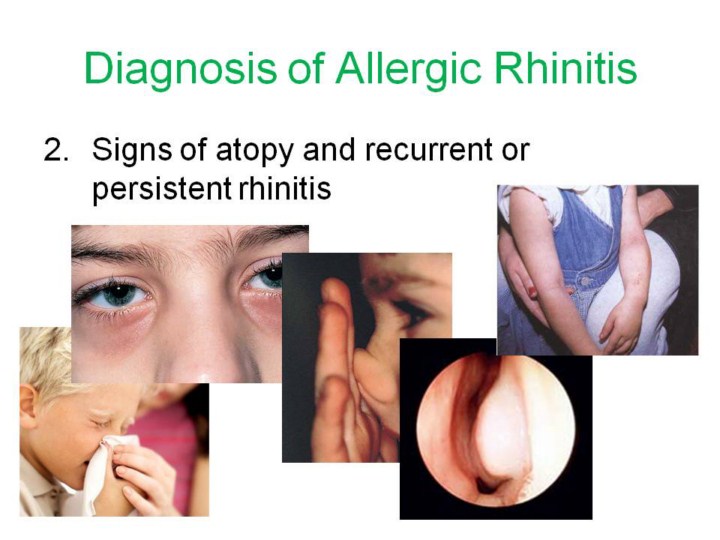| front |1 |2 |3 |4 |5 |6 |7 |8 |9 |10 |11 |12 |13 |14 |15 |16 |17 |18 |19 |20 |21 |22 |23 |24 |25 |26 |27 |28 |29 |30 |31 |32 |33 |34 |35 |36 |37 |38 |39 |40 |41 |42 |43 |44 |45 |review |
 |
Atopic individuals respond to allergen exposure by producing allergen-specific IgE. IgE antibodies bind to IgE receptors on mast cells throughout the respiratory mucosa and to basophils in the peripheral blood. When the same allergen is subsequently inhaled, the allergen binds to and crosslinks IgE on the mast cell surface, resulting in activation and release of inflammatory mediators. Nasal mast cells release histamine, prostaglandins, leukotrienes, PAF, and bradykinin, among other mediators. These result in the signs and symptoms of allergic rhinitis. Tissue eosinophilia is also a feature of allergic rhinitis, and eosinophil-derived mediators are associated with nasal epithelial injury and desquamation, subepithelial fibrosis, and hyperresponsiveness. The allergic nasal response consists of an immediate phase, which peaks at 15 to 30 minutes after allergen exposure and corresponds to mast cell degranulation and mediator release, and a late phase, which peaks at 6 to 12 hours after exposure and corresponds to infiltration of the nasal tissues by eosinophils, basophils, and other inflammatory cells. Patients with allergic rhinitis usually have similar inflammatory changes in the linings of the paranasal sinuses.
|